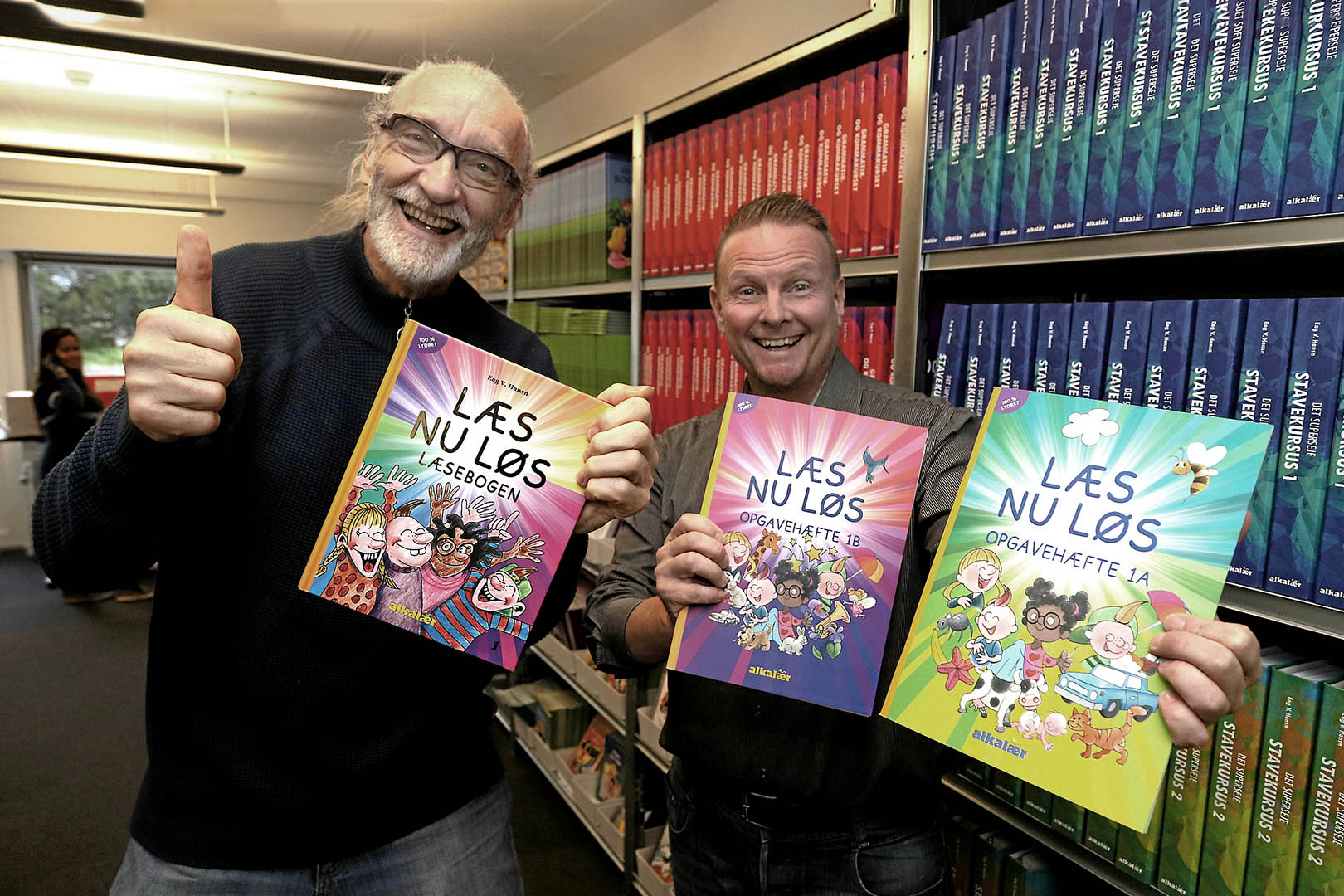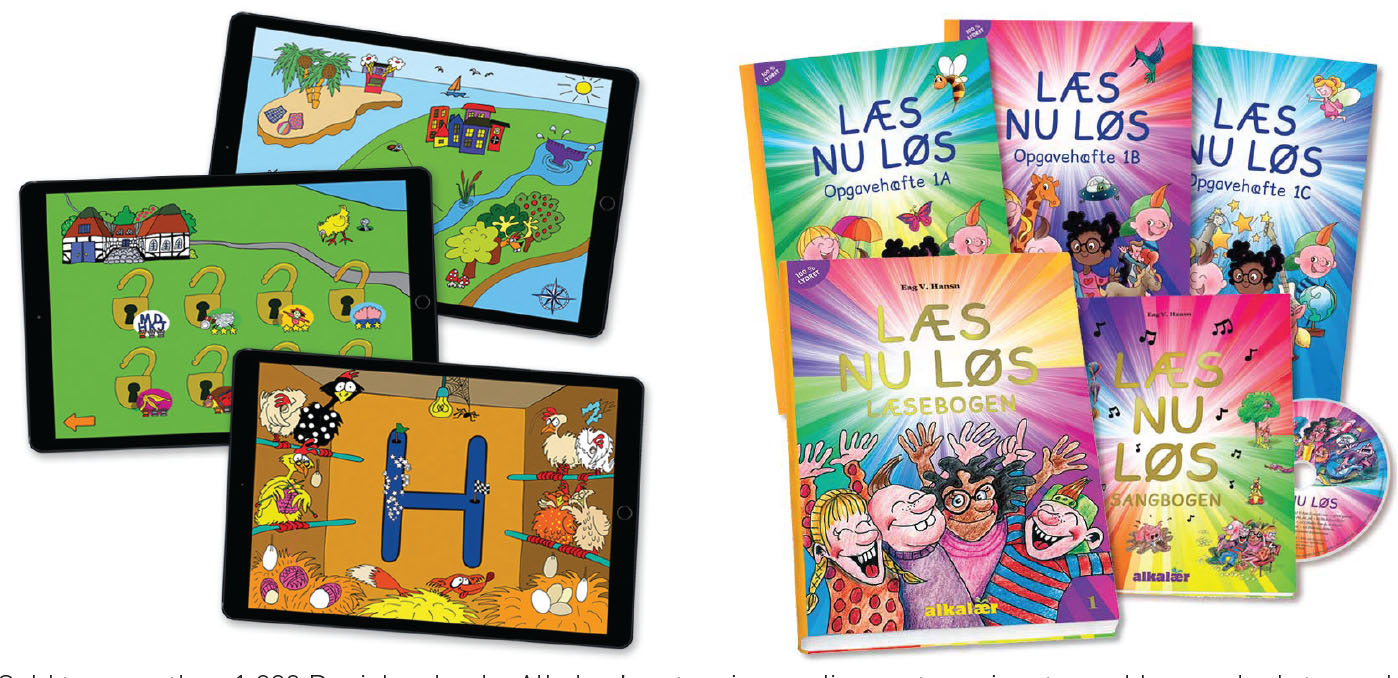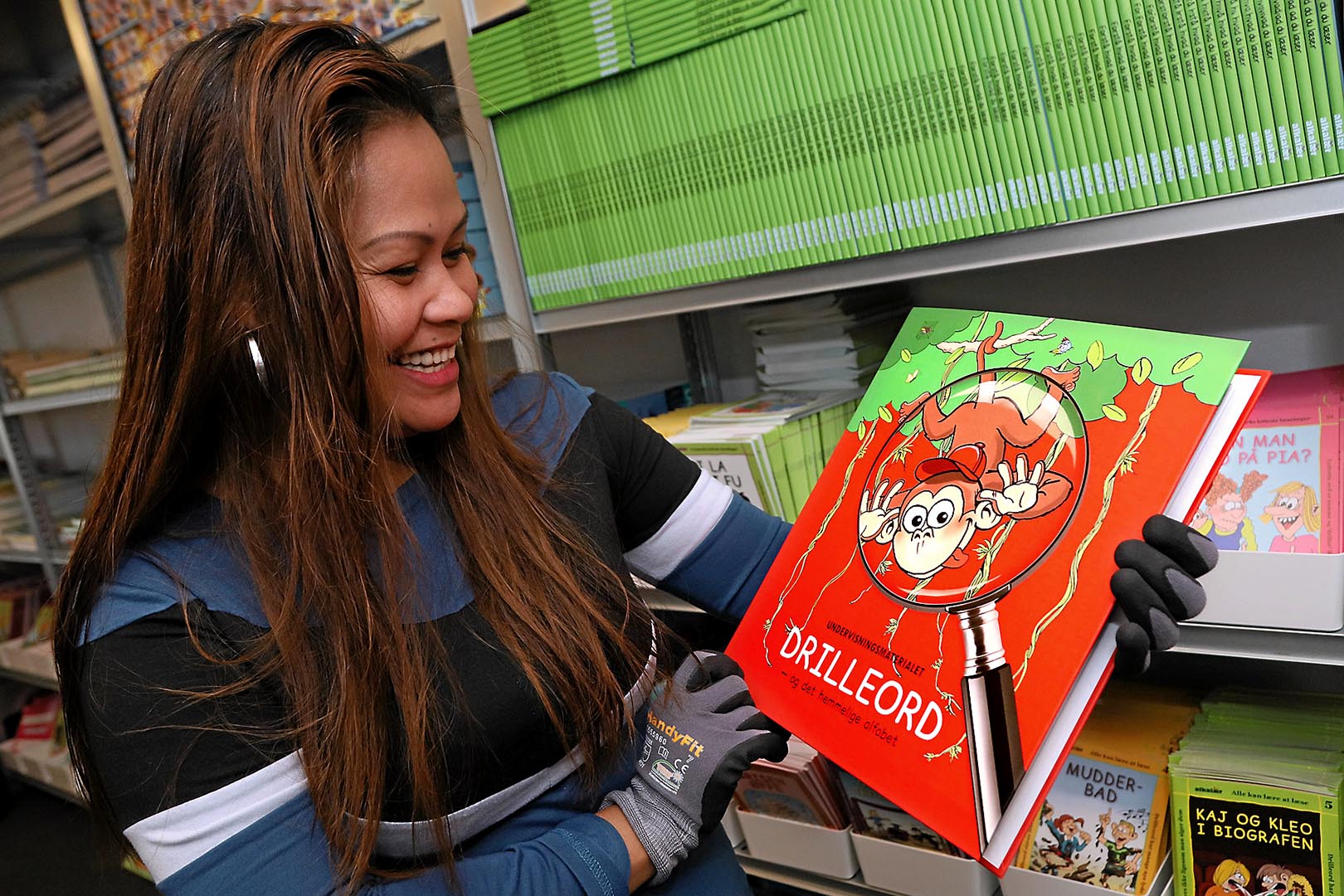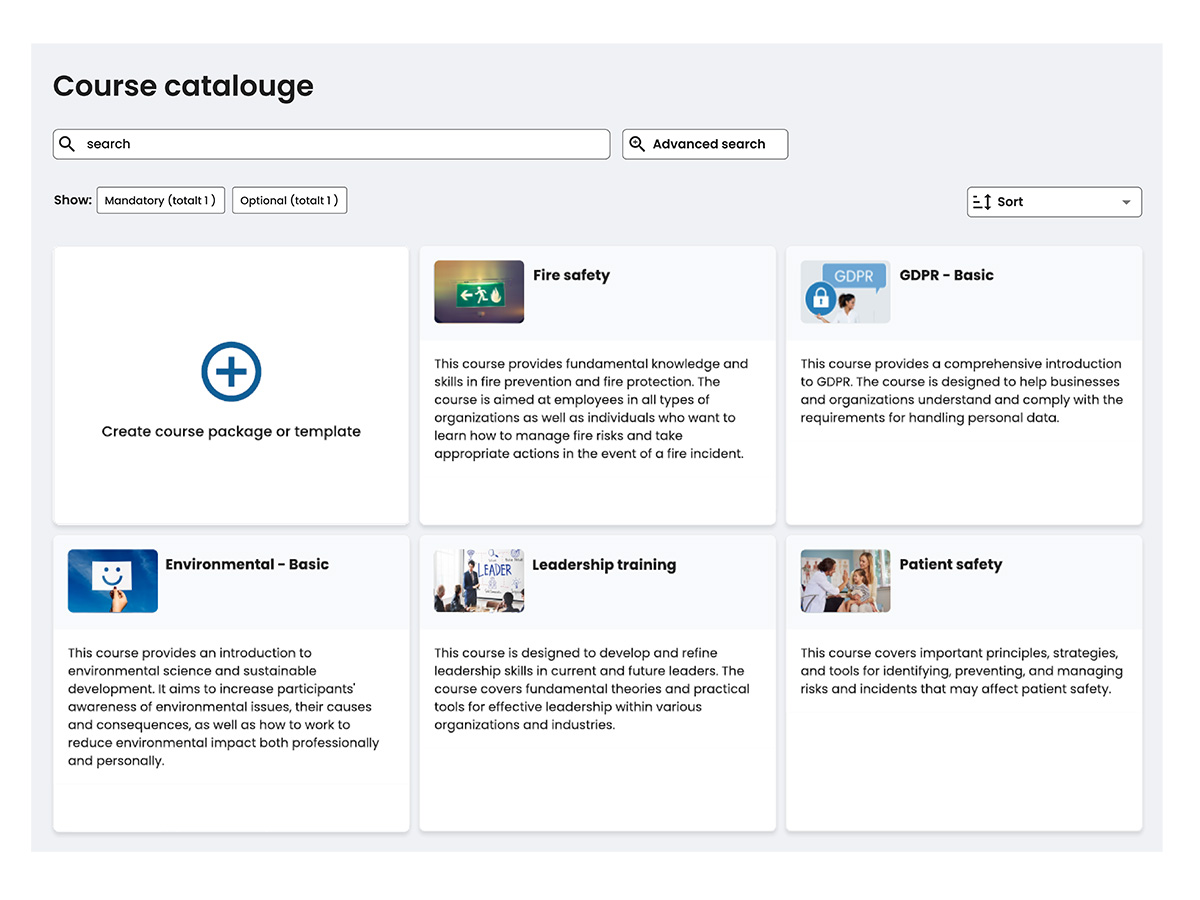Alkalær: Can anybody learn to read?
Text: Signe Hansen | Photos: Alkalær

Founder Erik V. Hansen and managing director Hasse Palmelund are working on expanding Alkalær’s successful reading method to the English language.
If you ask the Danish organisation Alkalær, the answer to the above question is a resounding ‘yes’ – as long as the learner is motivated and has language and functional senses. Of course, this is a claim that demands some proof, but having developed a complete reading system for Danish schools, Alkalær can now provide just that. And next, Alkalær’s founder is working on breaking the code to reading in English.
One of the things shared by all western countries is the Latin alphabet and its many vowels. And it is especially the many vowels and their various sounds in the Danish language that are tricky not just for Danish pupils, but also for people from, for instance, Asia. Besides, the Scandinavian countries share a phonetic approach to the written language, which means that words are created by combining the sounds of letters and not, like in China, for instance, by deciphering word images.
“The phonetic approach is excellent if you know the sounds of the letters and, on top of that, know the sounds that don’t have their own letter. But the written language creates problems for a lot of people. In Denmark alone, approximately 15 per cent of pupils leave elementary school without having learnt to read and write properly. That makes life difficult – it’s hard to get an education, you’re dependent on other people’s interpretations, exhausted by memory techniques, and potentially exposed to bullying,” says Hasse Palmelund, managing director of Alkalær. “But the worst part is that people who cannot read are dependent on others to form their own opinions, and that’s simply a rubbish situation to be in living in a democratic society.”
It was this massive hurdle that led children’s books author and founder of Alkalær, Erik Vierø Hansen, to start the company. He wanted to teach everybody to read, the young and the old, Danish and foreign. Having created a complete system for doing so, he is currently working on developing a similar system for breaking the code to reading in English.

Sold to more than 1,000 Danish schools, Alkalær’s extensive reading system aims to enable everybody to read.
It is never too late to learn to read
The catalyst that led Erik Vierø Hansen to dedicate years to writing and researching was an incident experienced during a temporary job at a school. Teaching the new pupils the sounds of the letters one morning, noting the name of the day on the chalkboard, he wrote ‘onsdag’ (Wednesday). Phonetically, in Danish, this would have been written ‘ånsda’. The children’s reaction was puzzled and confused. “It’s a normal reaction when you’re faced with something that’s illogical – and the illogical is not a rarity in the written language,” Erik Vierø Hansen points out.
In the beginning of 2000, Erik Vierø Hansen began developing Læsetrappen (‘the reading ladder’), which, step by step, presents the issues of the written language. The approach differs significantly from other reading methods by being 100 per cent consistent in the presentation of and approach to reading. The ambition was that everybody who follows Læsetrappen would learn to read. “It was a very narrow and dogmatic ambition to set for yourself,” Erik Vierø Hansen admits.
But he and Alkalær succeeded in creating material for all the steps of Læsetrappen, and in the process, he also created some of Denmark’s easiest reading books. With titles such as Bo så en ko (‘Bo saw a cow’) and Kan man tro på Pia? (Can you trust Pia?), they are 100 per cent phonetic reading books. On later steps, books introducing challenges such as silent letters and non-alphabetic sounds follow.
Currently, Alkalær’s teaching materials have been sold to more than 1,000 schools in Denmark, and its training courses have been attended by a similar number of teachers. A network of private educators, who help dyslexic children as well as adults break the code to reading, also uses the method. The network is nationwide, which means that even for those who left school a long time ago, it is not too late to learn to read.
Breaking the code to reading in English
Today, Alkalær’s reading methods offer a complete system, including reading books, booklets with reading tests, games, assignment folders, songs, and much more. “The lessons are, of course, individually adapted, and everybody works with the step they have reached on Læsetrappen. That way, you avoid frustration, defeat, memorisation and guesswork,” Erik Vierø Hansen explains.
Having successfully changed the approach to reading in many Danish schools, Alkalær and Erik Vierø Hansen have now set themselves an even bigger task – to break the code to reading in English. “The dream is to develop apps with which both Danish and English users can learn simply by playing fun games and solving riddles. We have already created three apps– two for the Danish reading code and one that makes our first attempt in English – but it’s a process that requires a lot of resources and it’s likely that we will need a little help. Over the long term, we want to teach everyone to read solely by using apps – that’s the future,” stresses Erik Vierø Hansen, who has taken the full consequence of his own phonetic research and thus today writes his name as Eag V. Hansn – exactly the way his name is pronounced.

Facts: -Alkalær has helped thousands of dyslexic people read. -The Alkalær method is used in more than 1,000 schools in Denmark. -With 83 private tutors, Alkalær has Denmark’s largest network within its field. -Alkalær has published 118 songs and sound tracks and 63 printed teaching resources. -Alkalær has created three apps. Web: www.alkalaer.dk
Subscribe to Our Newsletter
Receive our monthly newsletter by email





